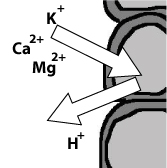Peat moss Walstad method
Posted: 17 Sep 2012, 21:13
I have an idea for a new project
>So it would be a ten gallon fish tank planted heavily with peace lilies and D. maculata
>the substrate would just be peat moss (no cap)
>there would be two bunocephalus cats
>no filtration just an air stone
my question is how feasible would this be? It would be full of plants in conjunction with the bacs living in the moss and in their roots would take care of the bioload. also I feel like the cats would love the peat for digging and hiding.
Only issue I have is pH, peat has low TDS so it should be fine in that respect.
how much would using peat as substrate screw with my pH I know the tank would have a very black water.
any input would be appreciated
-regards,
Nico
>So it would be a ten gallon fish tank planted heavily with peace lilies and D. maculata
>the substrate would just be peat moss (no cap)
>there would be two bunocephalus cats
>no filtration just an air stone
my question is how feasible would this be? It would be full of plants in conjunction with the bacs living in the moss and in their roots would take care of the bioload. also I feel like the cats would love the peat for digging and hiding.
Only issue I have is pH, peat has low TDS so it should be fine in that respect.
how much would using peat as substrate screw with my pH I know the tank would have a very black water.
any input would be appreciated
-regards,
Nico
